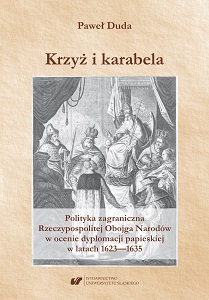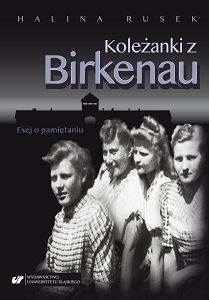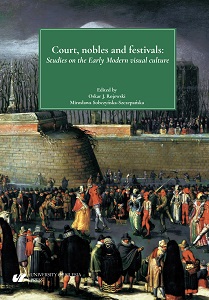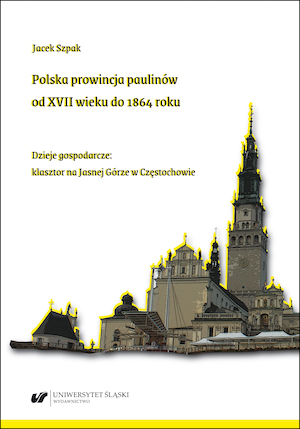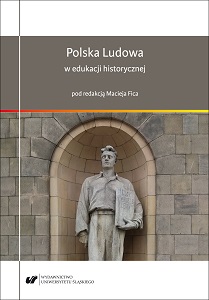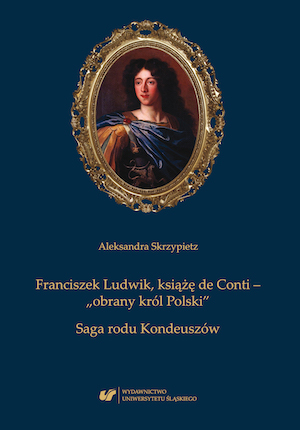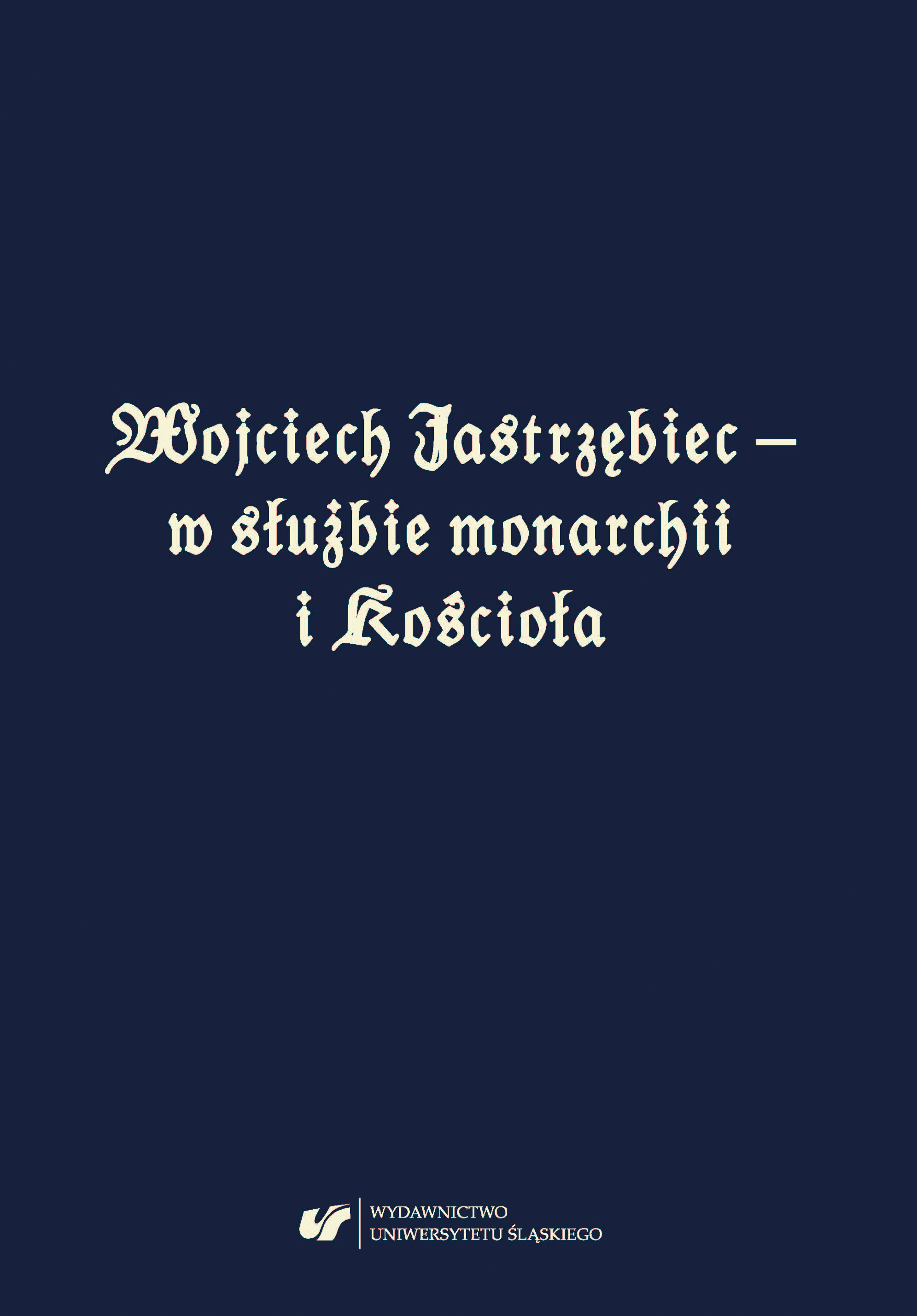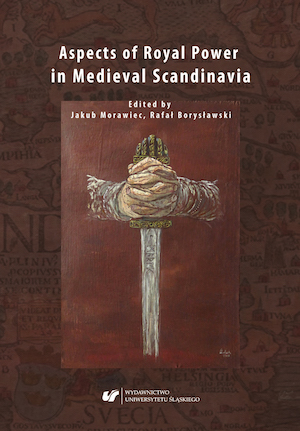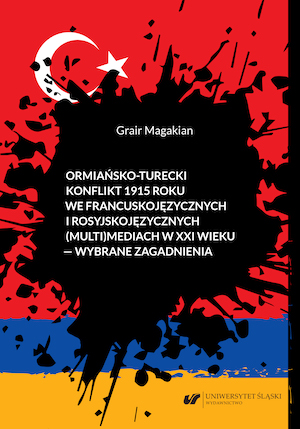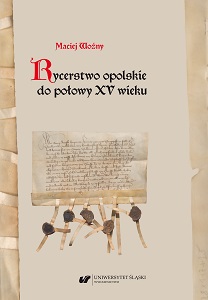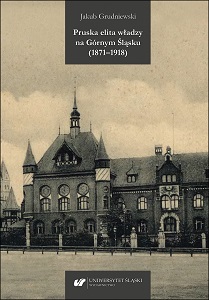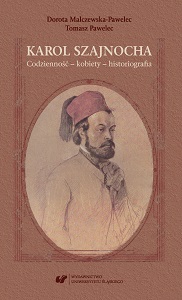
Karol Szajnocha. Every day life – Women – Historiography
Karol Szajnocha. Codzienność – kobiety – historiografia
Keywords: Szajnocha Karol; historiography; 19th century history; "everyday life"; "Jagiellonian idea"
In this dissertation, on the basis of a specific case of a 19th-century Lvovian historian – Karol Szajnocha (a great classic of Polish historiography) – the authors propose a particular model of a biographical study for the purpose of the history of historiography. In their opinion, it could constitute an alternative for the models which heretofore existed in this area. The latter are in their view excessively marked by an internal tension between the necessity to develop a strictly biographical theme and an imperative to study the historical concepts formulated by the protagonists of such dissertations in a systematic way. Frequently this results in an insufficient linking and imbalance of both of the layers of analysis, and in a lack of harmony between them.In the present study, in a conscious pursuit of integration, one took into account the influence of various elements of Karol Szajnocha’s biography upon the models in which he practiced history and – in a parallel manner – the influence which the historiographical activity exerted upon other areas of his activity and social roles. The authors inquire about how the fact of becoming a researcher of the past determined the forms and the areas of his activity in other fields (both in the public and in the private sphere). How did this fact manifest itself in the meanders of day-to-day existence and in the relations between family members, friends and professional acquaintances, how did it affect his internal life and dominant personality traits?Among the numerous dynamic dependencies (which are possible to be comprehended cognitively), the authors consider above all those which, in their opinion, heretofore were underexplored or which were simply omitted in the considerations devoted to the Lvovian historiographer which were heretofore expressed. Therefore the authors engage above all the question of the relations which obtain between his multi-aspectually conceived daily life in Lwów and beyond, and the creative motivation, as well as conditions and organisation of historiographical work. They reconstruct selected relations in the following layers: life experiences – historical thought – specific practice of writing the national history. They shed light on how certain particular interpersonal relations of Szajnocha (including also the deficiencies within their scope) translated themselves into the themes/motives of writing and into the ways in which he presented the past.The bulk of the considerations in the work is divided into three parts: Everyday life, Women and Historiosophy. As for the first part, it was the placement of the historian in the space that became the criterion of the division of the set of problems related to Szajnocha’s everyday life. Therefore the main chapter is devoted to his life in Lvov, and the supplementary one discusses the problem of excursions from the city on the Poltwa River. The question of women was presented on the surprisingly strongly interconnected and mutually complementing layers of Karol Szajnocha’s life: the practicing of history and the existence among (and next to) other people. As far as Szajnocha’s historiosophy is concerned, the authors focused on two problems which they considered to be the most crucial ones within the framework of the historical thinking of this author, and that both in the context of his specific-historical writings and in the relation to the formative life experiences. The first is the so-called Jagiellonian idea (a peculiar concept of the civilisational mission of Poles), whereas the second is the theme of an anti-German sentiment which manifests itself explicitly in numerous works of Karol Szajnocha.The panorama of Szajnocha’s daily life which was constructed in the dissertation took into consideration above all such themes as: (1) the experience of the city of Lvov as the closest social-spatial-cultural environment (the wanderings associated with the changing of places of residence, the furnishing of apartments, the routes used to navigate the city, observation/participation in political events which happened in the urban space, a generalised attitude toward the city of Lvov); (2) the conditions of existence (a reconstruction of their objective aspects and an attempt to answer the question about the manner in which Szajnocha experienced them and about their influence upon his personal history and historical output); (3) work and the attitude toward work (gainful employment versus work in the field of history, organisation of the time in which they were undertaken, along with their rhythms and the ways in which they were experienced; relation of the material exponents of existence to the possibility of engaging in a writer’s work); (4) “life among many” – a network of continually maintained social interactions/contacts (both with friends as well as with people who were encountered due to professional and paraprofessional activities); (5) forms of relaxation and the ways of spending one’s free time (in the city and beyond), along with linking of those aspects with writerly/research activities; (6) health/disease-sickness as an aspect of existence in Lvov and beyond; (7) the ordinariness of the daily existence “associated with the feeling of not being at home”, i.e. under the authority of the partitioning power (limitations which influenced both the private life and which affected creative work/engagement in creative work).The image of Szajnocha’s relations with the opposite sex embraces, on the one hand, relations with (above all but not exclusively) three women who were an important part of his life: his mother, his wife, and with the mother of the already deceased Juliusz Słowacki). On the other hand, it involves the intellectual and the emotional bonds with the female figures of his historical works. The work reconstructs in a systematic way the dynamics and the meanders of all of the relations which were mentioned, with reference to the time and the challenges presented by a particular stage of Karol Szajnocha’s life. There is also a presentation of Szajnocha’s contribution – a very substantial one, as it turned out – to the introduction of female figures to Polish historiography. The authors accorded a particularly comprehensive treatment to the mutual interactions of both of these areas of the historiographer’s relationships with women (inter alia the experience “drawn from life” as a starting point of the conceptualisation of the female aspect of history and of the construction of empathising psychological profiles of women, writing about women in the past as a space of working through various experiences, including those which were psychologically difficult, of one’s own existence). In reference to historiosophical questions, the authors focused on the reconstruction of the actual functioning of the concept of the Jagiellonian idea within the framework of the general image of Karol Szajnocha’s historical thinking, particularly of its influence (the directing function) within the framework of the practice (which was peculiar to him) of describing national history. The authors discerned its role in the scope of the selection of themes of work, in the fine-tuning of fields of research, in the selection and the ways of presentation of historical figures and other historical entities, and finally in the evaluation and appreciation of phenomena. In the context of Szajnocha’s attitude to “Germanhood”, the authors presented the problem of the rooting of fundamental elements of the historiographer’s historical thinking, not only in the intellectual reality that was typical of the historiographical tradition which he represented, but also in the formative experiences of his own life. These considerations also enabled the discernment of the Karol Szajnocha’s crucial founding role in reference to the genesis of the two mutually antagonistic interpretative directions which subsequently became immensely important in the development of the 20th-century Polish historiography – the eastern orientation (whose essence basically remains a positive evaluation of the expansion of Poland to the east) and the western orientation (with its peculiar ideas of civilisational struggle against Germanhood and the protection of western borderlands as Poland’s native lands).
More...
